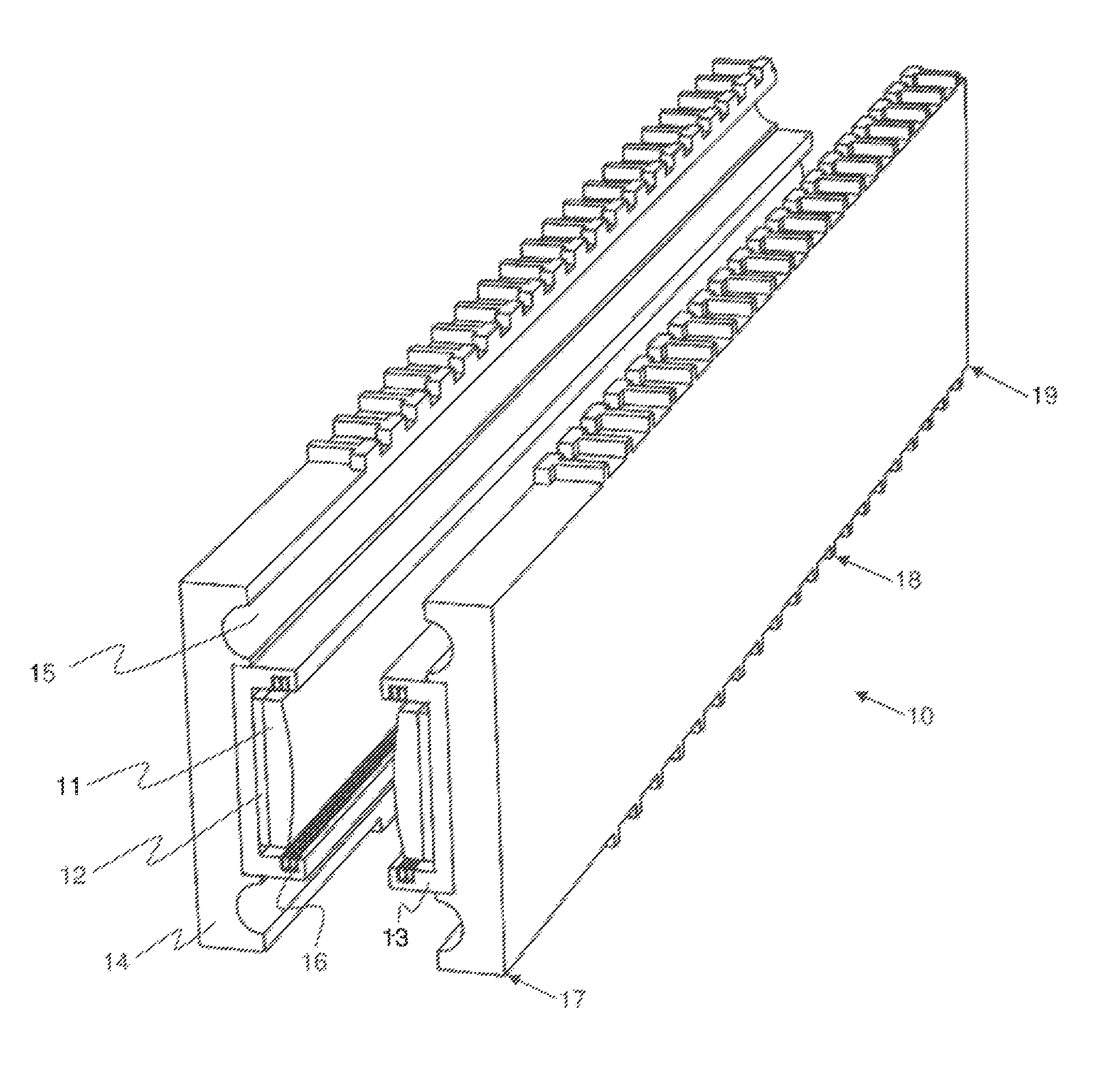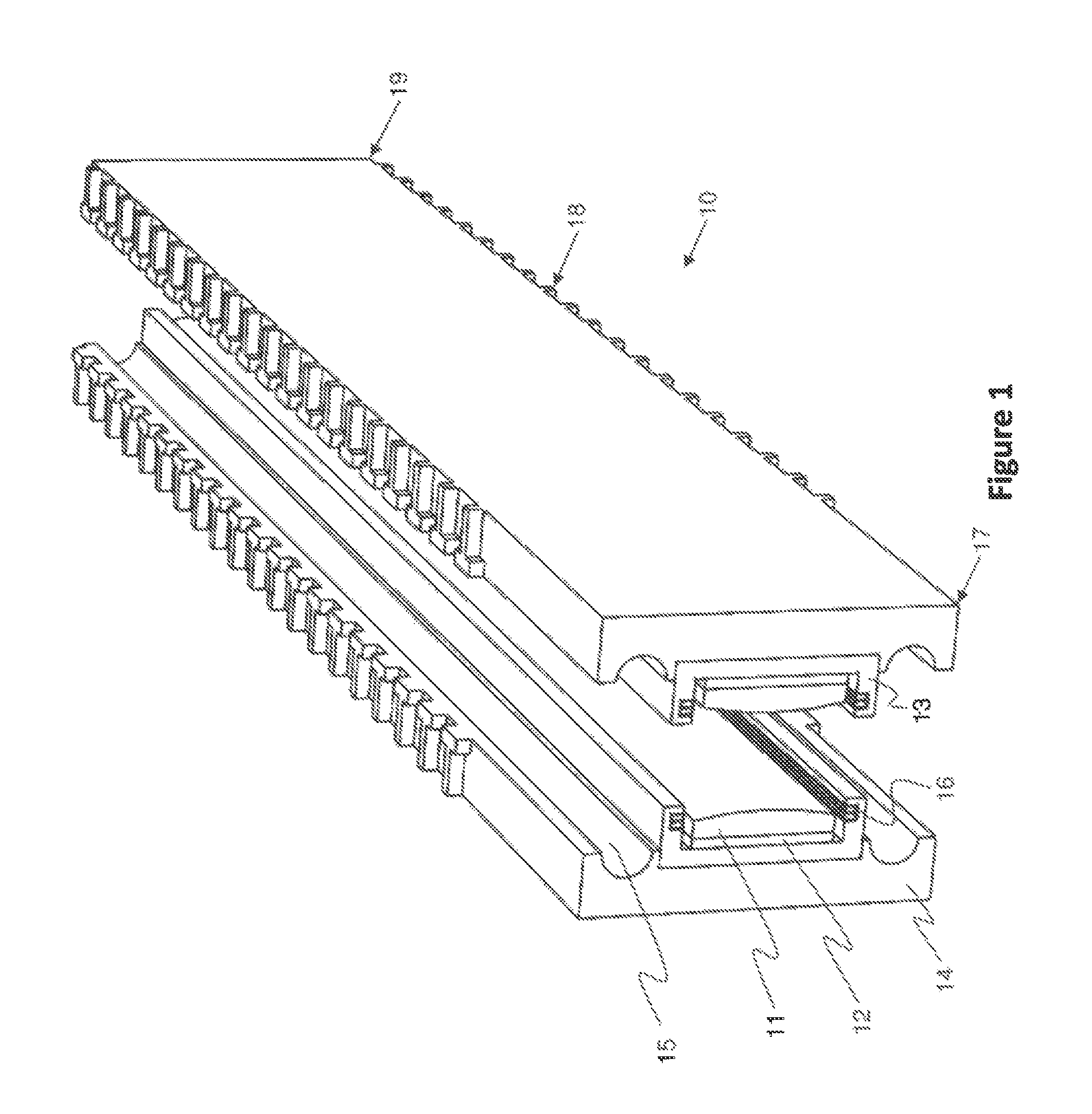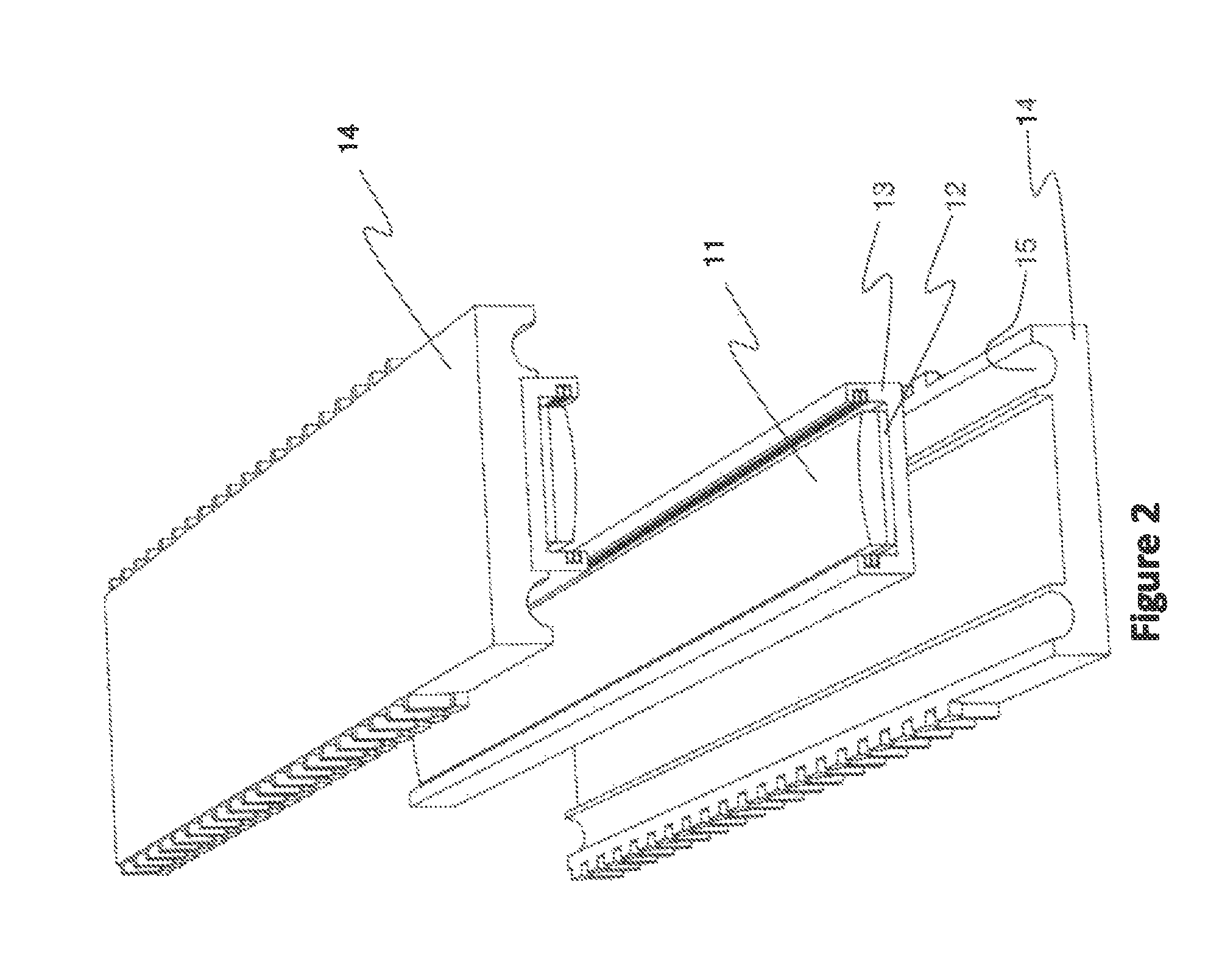Railgun with steel enclosed gun bore
a railgun and steel technology, applied in the field of railguns, can solve the problems of mutual repulsive force, inability to properly confine the high voltage rails within, and the gun bore is too heavy for practical us
- Summary
- Abstract
- Description
- Claims
- Application Information
AI Technical Summary
Benefits of technology
Problems solved by technology
Method used
Image
Examples
Embodiment Construction
[0030]The railgun 10 comprises a breech 17, a muzzle 19, and a bore 18. An armature 50 propels a projectile (not illustrated) along the gun bore 18 between high voltage rails 11. There is a support beam 14 associated with each high voltage rail 11. A two-rail 11 system is illustrated herein, but this invention is not limited to two-rail 11 systems; any discrete number of rails 11 greater than or equal to two can be used. Each support beam 14 is proximate the back (outside) of each high voltage rail 11, as shown in FIG. 1.
[0031]Each high voltage rail 11 is electrically isolated from its respective support beam 14 by being mounted onto an electrical insulator 12. Preferably, the electrical insulator 12 is made of a ceramic material. Insulator 12 can generally be any electrical insulator operable up to approximately 30 kV that is also mechanically robust, such as G10. Each electrical insulator 12 can be directly attached to a corresponding support beam 14. Preferably, however, each hig...
PUM
 Login to View More
Login to View More Abstract
Description
Claims
Application Information
 Login to View More
Login to View More - R&D
- Intellectual Property
- Life Sciences
- Materials
- Tech Scout
- Unparalleled Data Quality
- Higher Quality Content
- 60% Fewer Hallucinations
Browse by: Latest US Patents, China's latest patents, Technical Efficacy Thesaurus, Application Domain, Technology Topic, Popular Technical Reports.
© 2025 PatSnap. All rights reserved.Legal|Privacy policy|Modern Slavery Act Transparency Statement|Sitemap|About US| Contact US: help@patsnap.com



